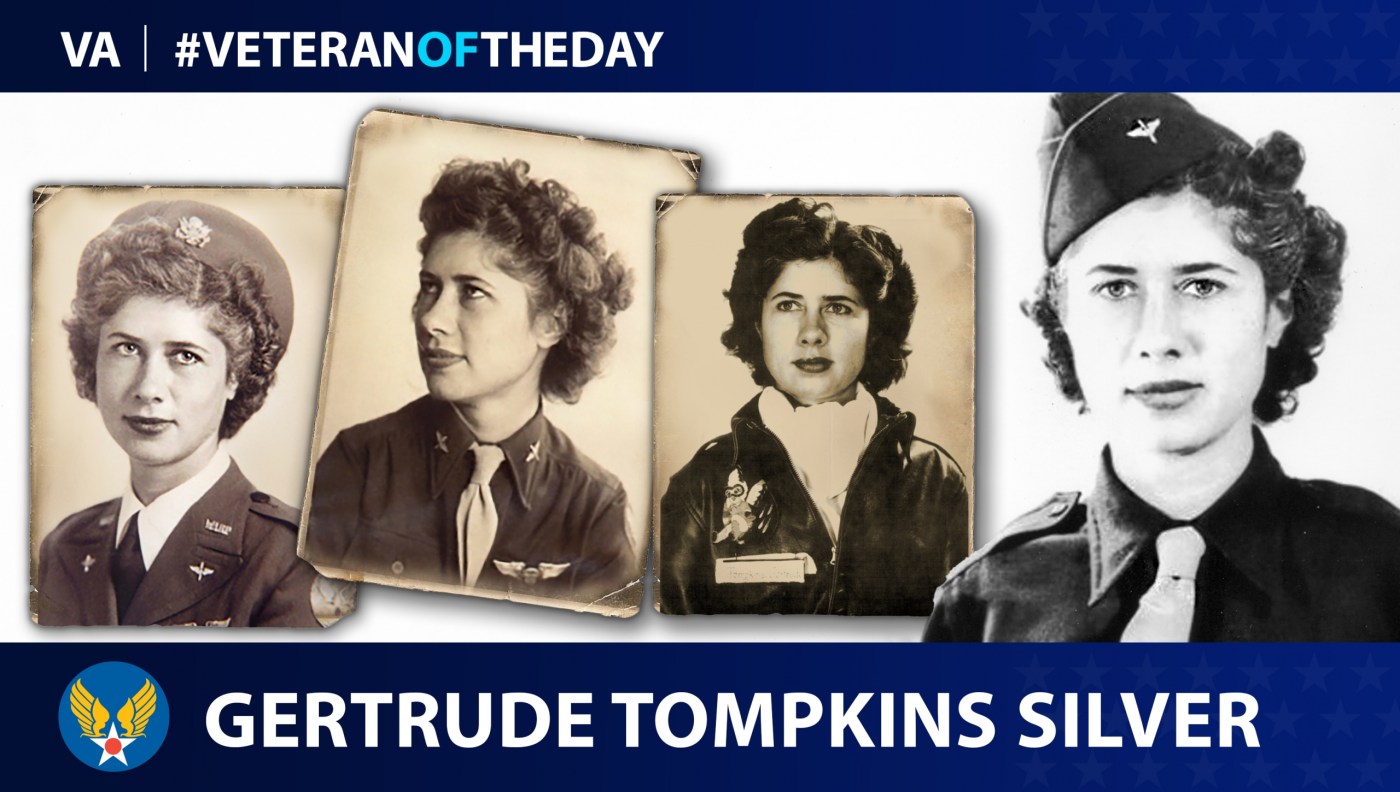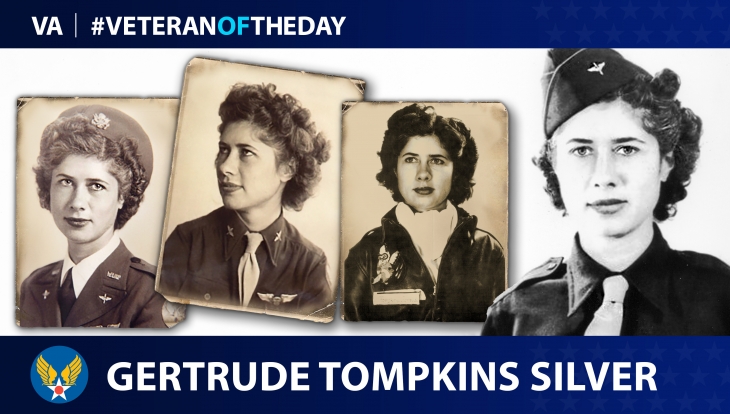Gertrude Vreeland Tompkins Silver was born in Jersey City, New Jersey, in October 1912. The youngest of three daughters, Silver was a shy child who had difficulty socializing and was a poor student. Her parents, hoping that a change of scenery might do her some good, relocated her to a farm when she was a teenager. She later attended the Pennsylvania School of Horticulture for Women, toured gardens in Europe and moved to New York City.
Silver fell in love with pilot Stanley Kolendorski, who gave her rides in his plane. Kolendorski was a member of Eagle Squadron 71, a group of American pilots who volunteered to assist the British Royal Air Force during World War II. While Kolendorski fought in Europe, Silver took flying lessons; after she received word in 1941 that Kolendorski had been killed in action, she applied to join the Women’s Airforce Service Pilots (WASP).
WASP was a civilian pilots organization that partnered with the Army Air Forces during World War II, working to train female aviators so that male pilots would be available to fight in the war. Although WASP served in noncombat roles by flying transports, testing equipment or helping to train anti-aircraft gunners and searchlight crews, they received the same training as their male counterparts in the military. Over 25,000 women applied to WASP; fewer than 2,000 were accepted, and only about 1,000 – including Silver – ultimately served.
In 1943, Silver underwent 24 weeks of WASP training at Avenger Field in Sweetwater, Texas. She later attended Advanced Pursuit School, where she learned to fly fighter aircraft like the P-51 Mustang, P-38 Lightning and P-54 Thunderbolt. By late 1944, she had logged over 750 hours in the air. In September of that year, she married longtime friend Henry Silver, a sergeant in the Army.
On Oct. 26, 1944, Silver and two other pilots departed from Mines Field (now Los Angeles International Airport) in Inglewood, California, on the first leg of a cross-country flight to New Jersey. They were ferrying the new P-51D variant of the Mustang, which would be shipped overseas to Allied forces in Europe after reaching the East Coast. At some point during the flight, en route to a stopover in Palm Springs, Silver disappeared. Due to a series of reporting errors – Silver’s flight plan was misplaced and staff at the airfield were not certain exactly when she had departed – she was not reported missing until several days later. An extensive search by the Army Air Force, Coast Guard and Civil Air Patrol failed to locate Silver; after more than 75 years, no trace of either her or her aircraft has ever been found.
A total of 38 WASP lost their lives during World War II; to date, Silver is the only one who remains missing. At the time of her disappearance, she was 32 years old. All WASP, including Silver, were awarded a Congressional Gold Medal in 2010 in recognition of their contributions to the war effort.
We honor her service.
Nominate a Veteran for #VeteranOfTheDay
Do you want to light up the face of a special Veteran? Have you been wondering how to tell your Veteran they are special to you? VA’s #VeteranOfTheDay social media feature is an opportunity to highlight your Veteran and his/her service.
It’s easy to nominate a Veteran. Visit our blog post about nominating to learn how to create the best submission.
Contributors
Writer: Stephen Hill
Editors: Alexandra Kaiser, Brooke Wolfenbarger
Researchers: Giacomo Ferrari, David Charles Deprez
Graphic artist: Kiki Kelley
Topics in this story
More Stories
For National Parks Week, this week's #HonoringVeterans spotlight honors the service of Army Veteran and NPS employee Charles Barr.
This week’s Honoring Veterans Spotlight honors the service of Army Veteran Albert Tristan, who served during the Vietnam War.
This week’s Honoring Veterans Spotlight honors the service of Marine Corps Veteran Rodney Sickmann, who served in Iran.







It’s the P-47 Thunderbolt!